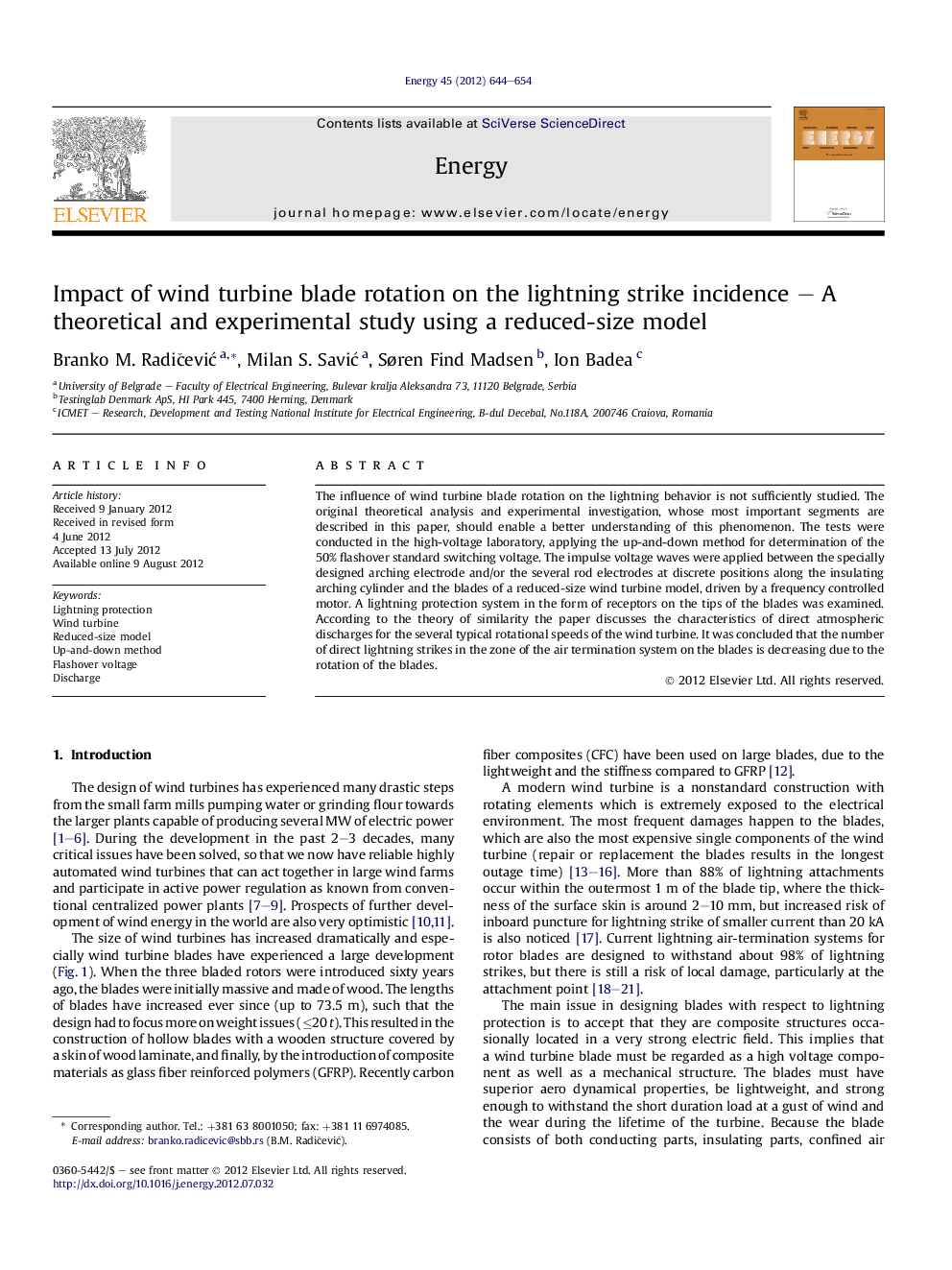| Article ID | Journal | Published Year | Pages | File Type |
|---|---|---|---|---|
| 1733711 | Energy | 2012 | 11 Pages |
The influence of wind turbine blade rotation on the lightning behavior is not sufficiently studied. The original theoretical analysis and experimental investigation, whose most important segments are described in this paper, should enable a better understanding of this phenomenon. The tests were conducted in the high-voltage laboratory, applying the up-and-down method for determination of the 50% flashover standard switching voltage. The impulse voltage waves were applied between the specially designed arching electrode and/or the several rod electrodes at discrete positions along the insulating arching cylinder and the blades of a reduced-size wind turbine model, driven by a frequency controlled motor. A lightning protection system in the form of receptors on the tips of the blades was examined. According to the theory of similarity the paper discusses the characteristics of direct atmospheric discharges for the several typical rotational speeds of the wind turbine. It was concluded that the number of direct lightning strikes in the zone of the air termination system on the blades is decreasing due to the rotation of the blades.
► The impact of wind turbine blade rotation on the lightning behavior was studied. ► A lightning protection system in the form of receptors on blade tips of a scale model was examined. ► The up-and-down method was used to determine the 50% flashover switching voltage. ► The impulse voltage waves were applied between the arched and/or rod electrodes and the rotating blades. ► The number of direct lightning strikes to the rotor blades is decreasing.
